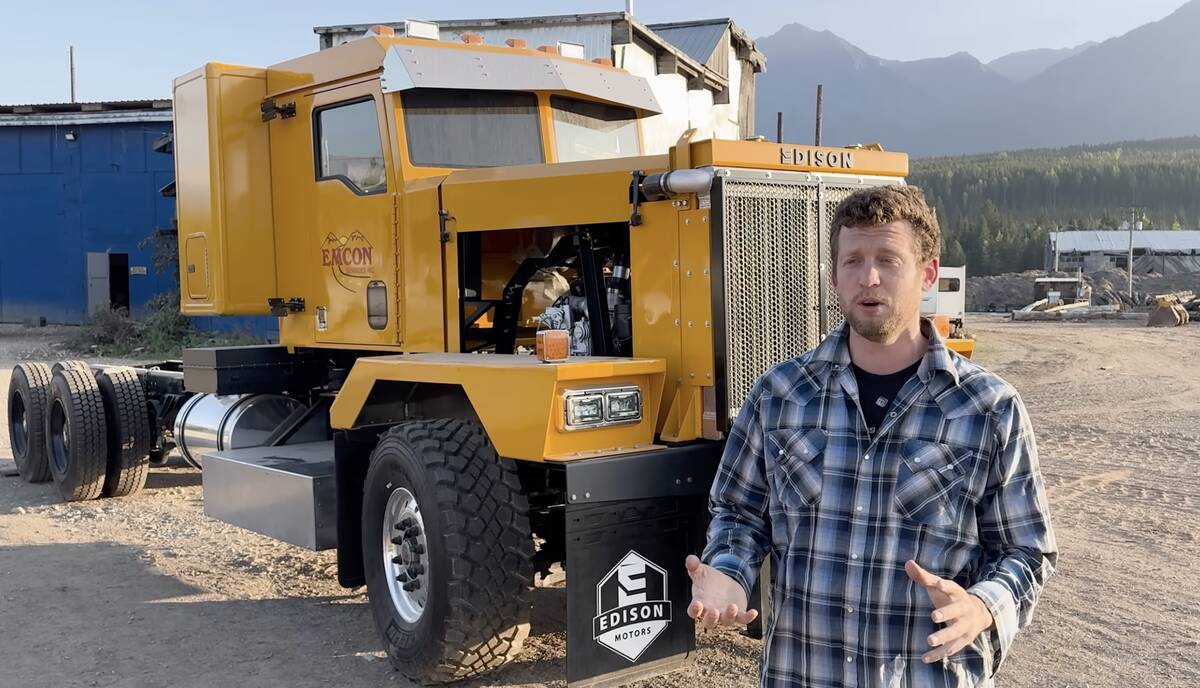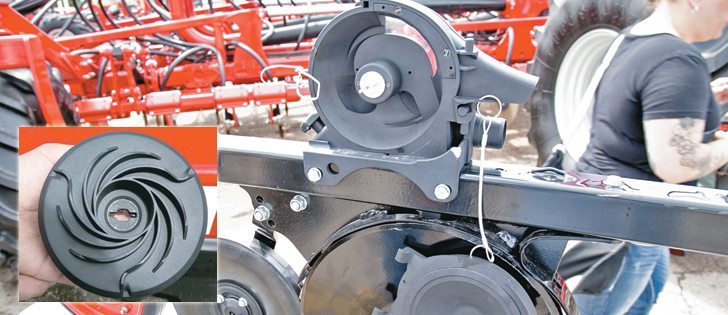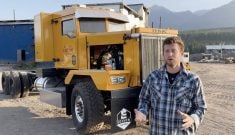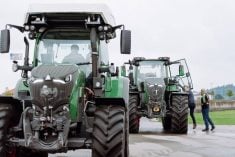Tweaking plant populations is an important adjustment that producers must make to maximize yields.
However, it involves more than just changing row spacing or the number of pounds per acre of seed.
The spacing of individual seeds within the row is also important.
Large cereal and oilseed producers may covet the seed spacing accuracy that planters provide, but the typical planter can store only a fraction of the inputs available in large air tanks. This discounts planters as a viable option for many large producers in Western Canada.
Tyler Billay of Horsch said the company’s new wheat singulator merges the accuracy of a planter with a large air seeder’s ability to cover acres efficiently.
“Inside this case there’s a rotor that spins with an electric motor,” Billay said. “This pushes the grain to the outside. It then catches on a notch and drops one seed at a time down the chute.”
Read Also

Gap in emission regulations hamstrings Canadian hybrid truck manufacturer
A B.C. company building hybrid engines for heavy trucks says they have the opportunity to build something leading edge in Canada, but our own laws are stopping them from doing it.
The wheat singulator attaches to the seed line above a drill’s opener.
Horsch developed its singulator as an add-on to its Pronto disc drill, but it is not yet available in Canada.
“It has been through field testing in Europe with great success,” Billay said. “Our Pronto drill is designed to seed from eight to 12 m.p.h. The singulator has not been the limiting factor in keeping speed up.”
He said the singulator does not have a problem with plugging.
“The benefit of having the singulator is increased accuracy in spacing of the plants as you go down the field. Instead of having plants close together, you’ll have a nice even four centi-metres, five cm, spacing down the row,” Billay said. “This allows for a better plant stand, reduced input cost in your seed and increased yield at the end of the year.”
















